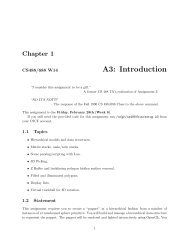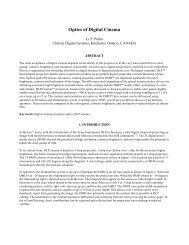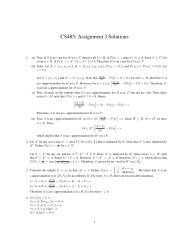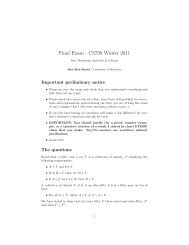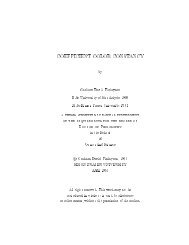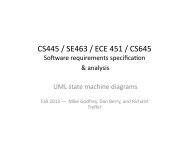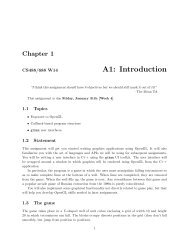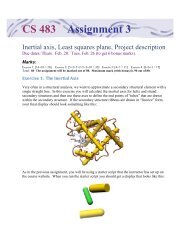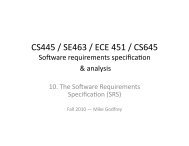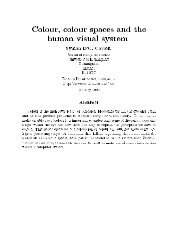Past Midterm and Exam Questions (PDF) - Student.cs.uwaterloo.ca ...
Past Midterm and Exam Questions (PDF) - Student.cs.uwaterloo.ca ...
Past Midterm and Exam Questions (PDF) - Student.cs.uwaterloo.ca ...
You also want an ePaper? Increase the reach of your titles
YUMPU automatically turns print PDFs into web optimized ePapers that Google loves.
52 CS488/688 Introduction to Computer Graphi<strong>cs</strong><br />
1. Primary rays<br />
2. Shadow rays<br />
3. Reflected rays<br />
17.11 Distribution Ray Tracing [Last Used: Winter 2006 Final]<br />
In distribution ray tracing, by <strong>ca</strong>sting many rays in a r<strong>and</strong>om fashion (i.e., “distributing them”)<br />
we <strong>ca</strong>n simulate many effects. The “r<strong>and</strong>om fashion” part is what allows us to achieve our effects.<br />
Describe what types of rays get “distributed” <strong>and</strong> what they “get distributed over” to achieve each<br />
of the following effects. We have provided a model answer for “Anti-aliasing” to better indi<strong>ca</strong>te<br />
what you should give for your answers.<br />
Anti-aliasing — distribute primary rays over pixel area.<br />
1. Soft shadows — distribute rays over<br />
2. Motion blur — distribute rays over<br />
3. Depth of field — distribute rays over<br />
17.12 Ray tracing lighting [Last Used: Winter 2006 Final]<br />
Consider a ray (P, ⃗v) that hits a surface S at a point Q, where the normal to S at Q is ˆn, <strong>and</strong><br />
where S has only diffuse reflection material components (d r , d g , d b ). Further, assume there is a<br />
white point light at position L with RGB intensity values (I, I, I), <strong>and</strong> a white ambient light with<br />
RGB intensity values (A, A, A).<br />
In ray tracing, we want to know the intensity of light that travels back along this ray <strong>and</strong><br />
eventually reaches the eye. For the situation described above, explain how we compute this intensity,<br />
noting any additional rays we <strong>ca</strong>st <strong>and</strong> any lo<strong>ca</strong>l lighting computations we perform.<br />
18 Splines<br />
18.1 Bézier Curves: Evaluation <strong>and</strong> Properties [Last Used: Fall 2009 Final]<br />
The following pictures show possible arrangements of control points for a cubic Bézier curve.<br />
P<br />
❜ 3<br />
❜<br />
P<br />
❜ 2<br />
❜ P 0<br />
❜<br />
P 1 ❜ P 2<br />
P 0<br />
❜<br />
P 3 ❜ P 1



